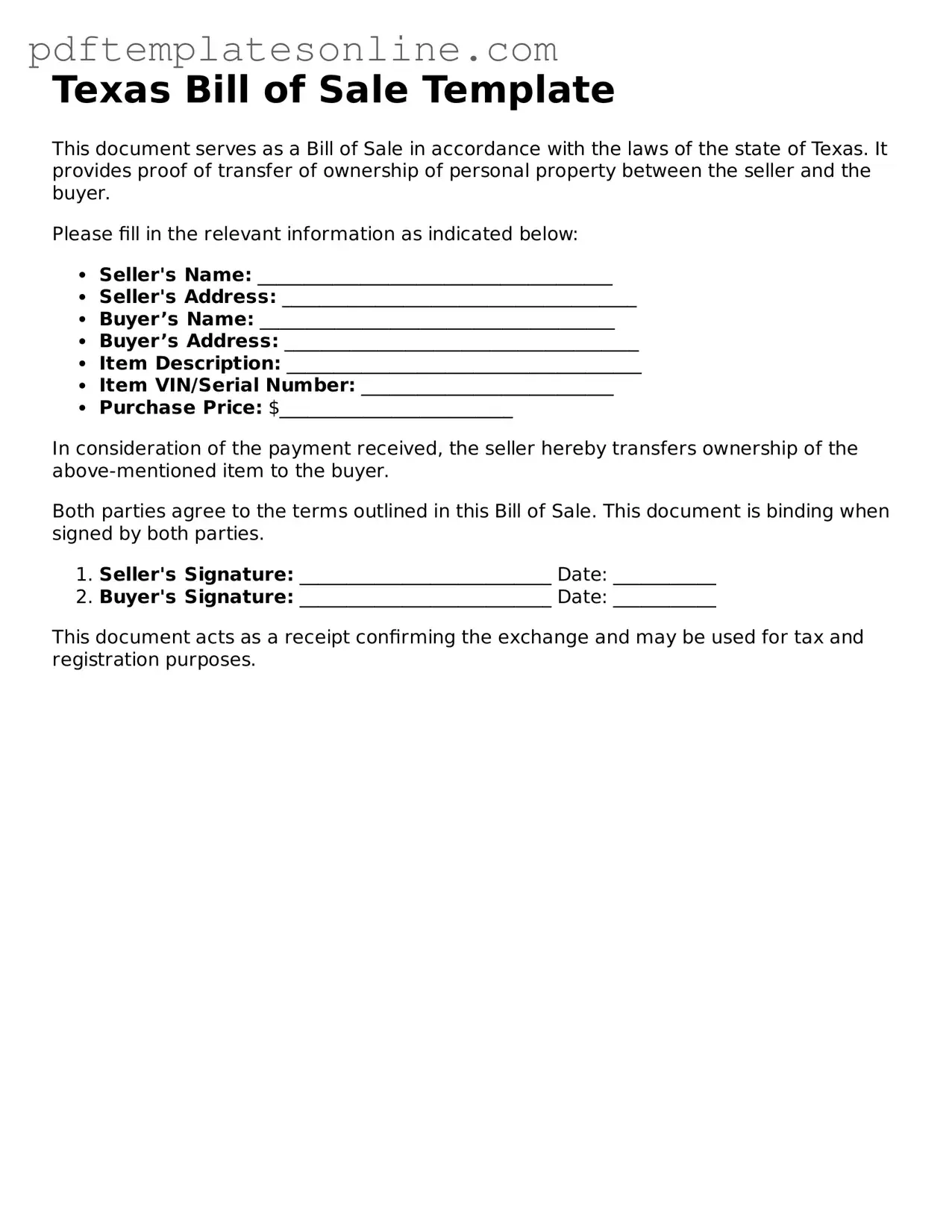Filling out the Texas Bill of Sale form can be straightforward, but there are common mistakes that individuals often make. One frequent error is not including all necessary information. Buyers and sellers should provide their full names, addresses, and contact details. Omitting any of this information can lead to confusion later on.
Another mistake is failing to accurately describe the item being sold. It’s essential to include details such as the make, model, year, and Vehicle Identification Number (VIN) for vehicles. For other items, a clear description helps avoid disputes about what was sold.
Many people forget to check the date on the form. The date of the transaction is crucial for record-keeping and legal purposes. Without the correct date, it may be difficult to establish when the sale took place.
Some individuals neglect to sign the document. Both the buyer and seller must sign the Bill of Sale for it to be valid. A missing signature can render the document ineffective and complicate future claims.
Using incorrect or outdated forms is another common mistake. It’s important to ensure that you are using the most current version of the Texas Bill of Sale form. Using an old version may lead to issues with compliance.
People sometimes do not include the purchase price. This amount should be clearly stated to avoid any misunderstandings. Leaving this blank can raise questions about the legitimacy of the sale.
Another oversight is not keeping a copy of the completed Bill of Sale. Both parties should retain a copy for their records. This document serves as proof of the transaction and can be important in case of future disputes.
Some individuals fail to check for spelling errors or incorrect information. Typos can lead to confusion or misinterpretation. Double-checking the information helps ensure clarity and accuracy.
Another mistake involves not having witnesses or notarization when required. While not always necessary, having a witness or notary can add an extra layer of security to the transaction.
Lastly, individuals may not understand the implications of the Bill of Sale. It is important to recognize that this document is not just a receipt; it can have legal consequences. Understanding its significance can help both parties navigate the sale more effectively.
